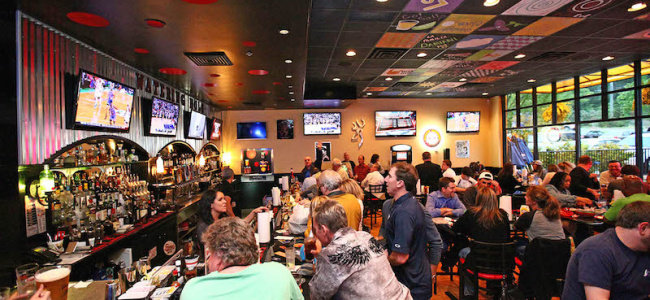Friends American Grill Knows the Secrets to Expansion
“It wasn’t an overnight success,” he says. “It took a lot of tender, loving care and hard work.” By the time the duo cut the ribbon on the second restaurant, they found they had a formula, and it was much easier to open their next locations.
Today, there are five Friends restaurants, a spot at a local baseball stadium and plans to open two more locations by the end of the year. Stanjevich said he learned a lot from opening the second restaurant. “We had to get our system right, and it took time to figure out what worked and what didn’t work,” he says. “But now, we can just take all that information and copy it to a new location.”
Here’s his advice on how restaurants can reach the milestone of going from one unit to two or more.
Show lenders a good financial track record
You probably already know that capital is one of the most important factors in opening up a successful second restaurant. But to get funds from a lender, you have to prove that your first restaurant is making money, and you need good cash flow, Stanjevich says.
Don’t be discouraged if you can’t get a small-business loan on your first try. “We tried to borrow some money about a year after starting,” he says, “and the bank’s attitude was, ‘Let’s see a three-year track record of success.’ ”
Not having a lender, he says, could actually work in your favor. “When your own funds are in it 100%, you will be a lot more intelligent and careful about taking care of your business, compared to if you borrowed money,” Stanjevich says. “When you borrow, you just don’t have that same level of ownership.”
After your eatery is established, however, there are times when it can make sense to get a small-business loan, and it will probably be easier to get approved if your company has a track record of success. Stanjevich says by the time Friends had been open three years, he and Cartwright had self-funded the opening of three restaurant locations.
“It became more of a sure thing to be approved for a loan,” he says.
To increase expansion efforts, the co-owners recently took out a 10-year SBA loan to help pay for real estate, which required a 5% down payment, Stanjevich says. “We don’t borrow money to keep the business going,” he says, “but we have borrowed money for property.”
Identify your second market before you open your first location
After studying the local community, Stanjevich and Cartwright strategically chose to open their first restaurant on a street that was reasonably well traveled but far from the congested mall areas where they’d have to compete with large chain restaurants.
“We knew that every Friends location would be in smaller neighborhoods, instead of large shopping areas,” Stanjevich says. The owners determined that less competition from big-name brands would help business thrive. It also meant cheaper rent, helping them to keep more money in the business, which they needed when the time came to expand.
Erica Bracey, a business consultant with the Small Business Development Center in Atlanta, says these are the types of decisions entrepreneurs should make before opening their first location. “My conversation with every entrepreneur always starts with the target market,” she says. “Who are you targeting? Why will they patronize your restaurant?”
Once you understand your target market, you can create a marketing plan — which is a part of the overall business plan — and put together a strategy to reach customers and draw them into your restaurant, she says.
Document everything
When you have just one restaurant, you can change a recipe or procedure on the fly. New-restaurant owners have a unique ability to be nimble and tend to their local customers in a way that sets them apart from large franchises, says Rachel Kalt, senior strategist at The Culinary Edge, a restaurant consulting business in San Francisco.
“Starting small has its advantages,” she says. “It allows you to be more flexible. You can think about the guests that you’re serving and be adaptable to their needs.”
For example, you may have thought your business would stand out from its competitors by offering large salads. But if you find that customers are buying more of your sandwiches than your salads, or your costs for the types of salads you’re making are too high, you may have to adapt by increasing the number of sandwich options on your menu, she says.
When you expand your business, Stanjevich notes, such changes for the better need to be documented. Have a process for documenting everything — alterations to recipes as well as how you will receive shipments from suppliers.
Teach your company’s culture to employees
Hiring good managers and employees is crucial, because you can’t be in two restaurants at once, Stanjevich says. Once you find people who are smart and have experience, he says, you need to make sure they understand your business culture.
“We spend a lot of time in our restaurants, and we interact with our managers and employees and customers,” Stanjevich says. “Through that interaction, people can pick up on our approach and frame of mind.”
For more information about how to start and run a business, visit NerdWallet’s Small Business Guide. For free, personalized answers to questions about starting and financing your business, visit the Small Business section of NerdWallet’s Ask an Advisor page.
Margarette Burnette is a staff writer covering personal finance for NerdWallet. Follow her on Twitter @margarette and on Google+.

